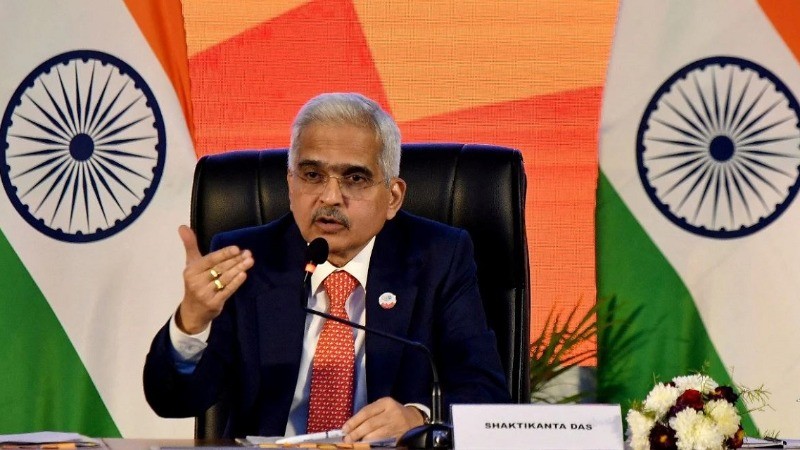
India’s central bank is in the midst of an intense battle against inflation. At a recent post-policy meeting, Reserve Bank of India (RBI) Governor Shaktikanta Das highlighted the central bank's decision to maintain interest rates for the 10th consecutive time, with one vote in favor of a rate cut. However, the Monetary Policy Committee (MPC) unanimously agreed to shift its stance to "neutral," offering more flexibility while ensuring inflation aligns with the target without jeopardizing economic growth.
The RBI remains committed to a durable alignment of inflation with its target while supporting growth. This new stance grants the central bank more room to maneuver, allowing it to balance inflation concerns with growth objectives.
While luxury goods such as iPhones and high-end cars continue to sell in India, millions still rely on government-provided food due to low or no income. The central bank is closely monitoring inflation trends in the coming months to prevent any undue rise.
In an unusual analogy, Das compared the current inflation battle to using horses in warfare, following his earlier comparison of inflation to an elephant. He emphasized that inflation remains a serious challenge, with vigilance necessary to avoid inflation spiraling out of control. "Earlier, I used an elephant analogy; now I am using a horse. In a war, both elephants and horses are used historically," Das said.
Das had previously described inflation as "the elephant in the room" in June, and while there was optimism that inflation was retreating toward the 4% target, his current horse analogy carries a more cautious tone.
Arjuna's Focus
Last year, Das compared the RBI’s inflation fight to Arjuna from the Mahabharata, focusing solely on the eye of a fish, symbolizing inflation. However, as inflation remained above the 4% target in 2023, the RBI shifted its approach, incorporating financial stability into its objectives. Das later drew inspiration from Kautilya, an ancient strategist, as a model for addressing both inflation and broader economic risks.
Inflation Trends and Challenges
India’s retail inflation has been a persistent challenge, reaching 7.44% in July last year. Although inflation eased to a five-year low of 3.54% in July 2024, it rose slightly to 3.65% in August. The RBI predicts inflation could rise to 5.14% in September and remain elevated in October. However, the central bank expects moderation by the third quarter.
Das reaffirmed that while inflation is moderating, risks remain. "We have now greater confidence that inflation is moderating, but we are acutely aware of significant risks. We have to be very careful," he said.
The global geopolitical landscape, unpredictable weather, and rising food and metal prices pose ongoing risks. Das warned that despite inflation’s current moderation, the RBI cannot afford to relax its efforts.
Geopolitical Concerns
External Affairs Minister S. Jaishankar recently highlighted the impact of the Middle East conflict on the global economy, including rising oil prices and disrupted foreign trade. India, a significant importer of oil, could face increased inflationary pressure if the conflict escalates.
Oil Minister Hardeep Singh Puri expressed confidence in India's ability to meet energy demands by diversifying its oil suppliers. However, an escalation in the Middle East could result in higher crude oil prices, further driving inflation.
Food Inflation and Its Impact
Food inflation remains a key concern for the Indian economy. While strong sowing and buffer stocks could help stabilize food prices later in the year, adverse weather conditions and damaged crops have driven prices higher. In August, vegetable prices rose by 10.71%, with items like onions and tomatoes becoming more expensive. A recent analysis showed the cost of a typical vegetarian meal in India increased by 11% in September compared to the previous year.
Government measures, including selling vegetables at reduced prices and imposing stock limits, aim to address food inflation. However, balancing consumer needs and farmer livelihoods remains a challenge.
In the post-pandemic recovery phase, domestic demand, global supply disruptions, and agricultural performance will significantly shape India’s inflation outlook. With this in mind, Das remains focused on controlling inflation, riding his metaphorical horse into battle.